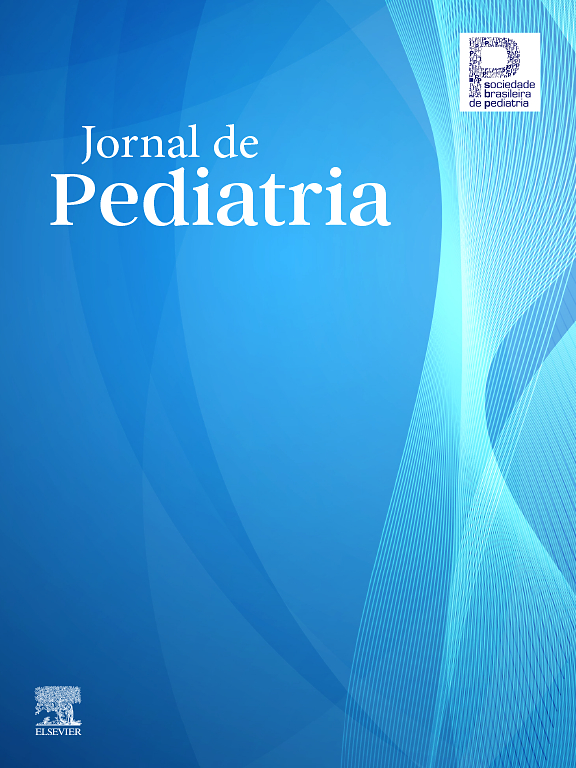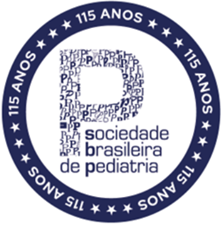The association of the HIV and Epstein-Barr virus infections has been reported in several studies, specially in children that present lymphocytic interstitial pneumonitis. The analysis of the incidence of Epstein-Barr virus infection was performed in children with AIDS, in those with AIDS with and without lymphocytic interstitial pneumonitis, comparing to children without HIV infection.
MethodsA cross-sectional study was performed with 60 children with AIDS and 54 children not infected by HIV, matched by sex and age, in the Hospital Infantil Joana de Gusmão in Florianópolis city, Santa Catarina State, Brazil, between June 1994 and June 1995. The selection of the cases followed the order of the consultation. The detection of antibodies against Epstein-Barr capsid antigen was performed by standard indirect immunofluorescence techniques and ELISA, and antibodies against nuclear antigen only by ELISA. The stage of the infection was defined according to serologic responses.
ResultsLymphadenopathy occurred in 59 cases (98.3%), hepatomegaly in 51 (85.0%), splenomegaly in 46 (76.7%), recurrent bronchopneumonia in 41 (68.3%). Lymphocytic interstitial pneumonitis was observed in 21 cases (35.0%), 90.5% of which showed positive serologic reactions to EBV. The geometric mean of the IgG against capsid antigen titers was 1:439.5 in the cases group and 1:42.8 in the controls. The IgM against capsid antigen by indirect immunofluorescence techniques was positive in 16 (26.7%) of the 60 cases and only in one of the 53 controls (1.9%) (p=0.0002). The primary Epstein-Barr virus infection was evidenced with greater frequency in the children with AIDS (p<0.0001), as well as the reactivated infection (p=0.0745).
ConclusionsThe incidence of primary and reactivated Epstein-Barr virus infection was more frequent in the patients with AIDS. The primary and reactivated Epstein-Barr virus infection was observed in almost all of the patients with diagnosis of lymphocytic interstitial pneumonitis (90.5%).
A associação das infecções por HIV e vírus Epstein-Barr tem sido relatada em diversos estudos, especialmente em crianças que apresentam pneumonia intersticial linfóide. Analisou-se a incidência da infecção pelo vírus Epstein-Barr em crianças com AIDS, naquelas com AIDS com e sem pneumonia intersticial linfóide, comparando-se com crianças não infectadas pelo HIV.
MétodosRealizou-se um estudo transeccional com 60 crianças com AIDS e 54 não infectadas pelo HIV, pareadas por sexo e idade, no Hospital Infantil Joana de Gusmão em Florianópolis, Santa Catarina, Brasil, de junho de 1994 a junho de 1995. A seleção dos casos seguiu a ordem de atendimento. Pesquisou-se anticorpos anticapsídeo do vírus Epstein-Barr por imunofluorescência indireta e ELISA, e antinucleares por ELISA. Definiu-se o estágio da infecção conforme as respostas sorológicas.
ResultadosA linfadenopatia ocorreu em 59 casos (98,3%), hepatomegalia em 51 (85,0%), a esplenomegalia em 46 (76,7%), broncopneumonias recorrentes em 41 (68,3%). Observou-se pneumonia intersticial linfóide em 21 casos (35,0%), dos quais 19 (90,5%) tinham sorologia positiva ao vírus Epstein-Barr. A média geométrica dos títulos de IgG anticapsídeo, por imunofluorescência indireta, foi de 1:439,5 nos casos e 1:42,8 nos controles. Detectou-se IgM anticapsídeo, por imunofluorescência indireta, em 16 (26,7%) dos 60 casos e em um de 53 controles (1,9%) (p=0,0002). A infecção primária pelo vírus Epstein-Barr foi mais freqüente nos casos (p<0,0001), bem como a infecção reativada (p=0,0745).
ConclusãoA incidência de infecção primária e reativada pelo vírus Epstein-Barr foi mais freqüente nos pacientes com AIDS. Evidenciou-se infecção primária ou reativada na quase totalidade dos pacientes com diagnóstico de pneumonia intersticial linfóide (90,5%).








